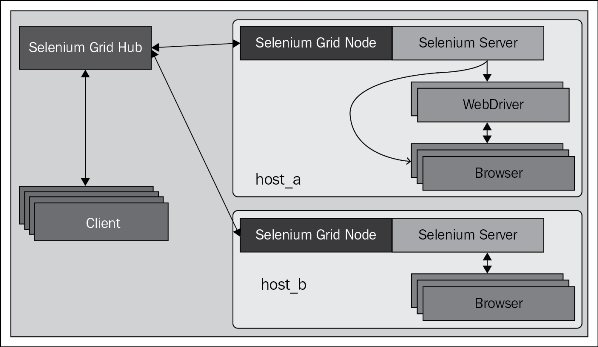Understanding Selenium Grid
Selenium Grid is a version of Selenium that allows teams to set up a number of Selenium instances and then have one central point to send your Selenium commands to. This differs from what we saw in Selenium Remote WebDriver, where we always have to explicitly say where the Selenium server is as well as know what browsers that server can handle.
With Selenium Grid, we just ask for a specific browser, and then the hub that is part of Selenium Grid will route all the Selenium commands through the Remote Control you want. Refer to the following diagram for the interaction between the Selenium Grid hub and the other components:

Selenium Grid also allows us to call a specific browser on a specific platform with just a simple update to the desired capabilities object that we learned about in the previous chapters. This allows us to route our tests accordingly so that we know that we are testing on the right browser and on the right platform. We can see an example of this...
























































